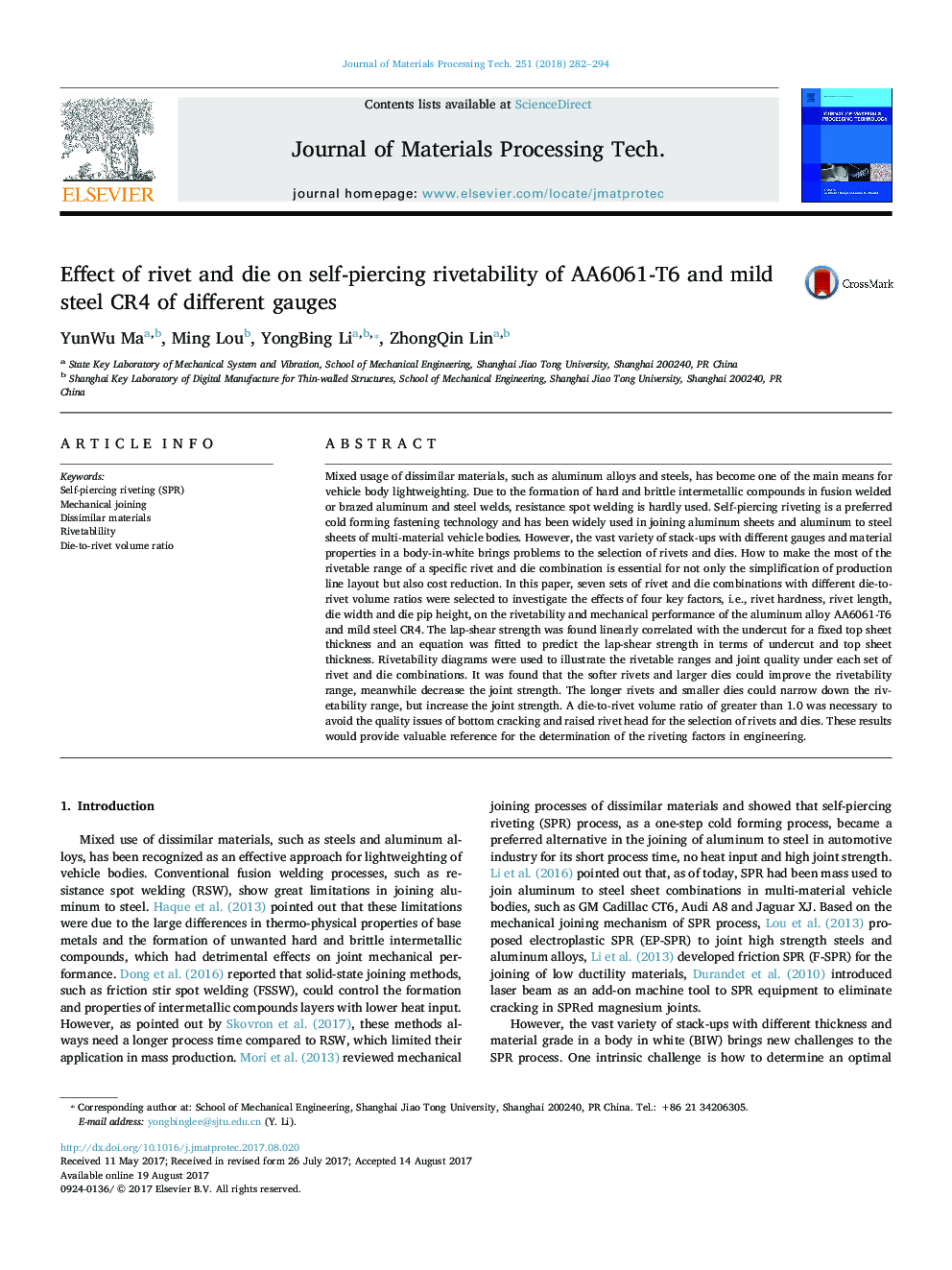| کد مقاله | کد نشریه | سال انتشار | مقاله انگلیسی | نسخه تمام متن |
|---|---|---|---|---|
| 5017644 | 1466716 | 2018 | 13 صفحه PDF | دانلود رایگان |

Mixed usage of dissimilar materials, such as aluminum alloys and steels, has become one of the main means for vehicle body lightweighting. Due to the formation of hard and brittle intermetallic compounds in fusion welded or brazed aluminum and steel welds, resistance spot welding is hardly used. Self-piercing riveting is a preferred cold forming fastening technology and has been widely used in joining aluminum sheets and aluminum to steel sheets of multi-material vehicle bodies. However, the vast variety of stack-ups with different gauges and material properties in a body-in-white brings problems to the selection of rivets and dies. How to make the most of the rivetable range of a specific rivet and die combination is essential for not only the simplification of production line layout but also cost reduction. In this paper, seven sets of rivet and die combinations with different die-to-rivet volume ratios were selected to investigate the effects of four key factors, i.e., rivet hardness, rivet length, die width and die pip height, on the rivetability and mechanical performance of the aluminum alloy AA6061-T6 and mild steel CR4. The lap-shear strength was found linearly correlated with the undercut for a fixed top sheet thickness and an equation was fitted to predict the lap-shear strength in terms of undercut and top sheet thickness. Rivetability diagrams were used to illustrate the rivetable ranges and joint quality under each set of rivet and die combinations. It was found that the softer rivets and larger dies could improve the rivetability range, meanwhile decrease the joint strength. The longer rivets and smaller dies could narrow down the rivetability range, but increase the joint strength. A die-to-rivet volume ratio of greater than 1.0 was necessary to avoid the quality issues of bottom cracking and raised rivet head for the selection of rivets and dies. These results would provide valuable reference for the determination of the riveting factors in engineering.
Journal: Journal of Materials Processing Technology - Volume 251, January 2018, Pages 282-294